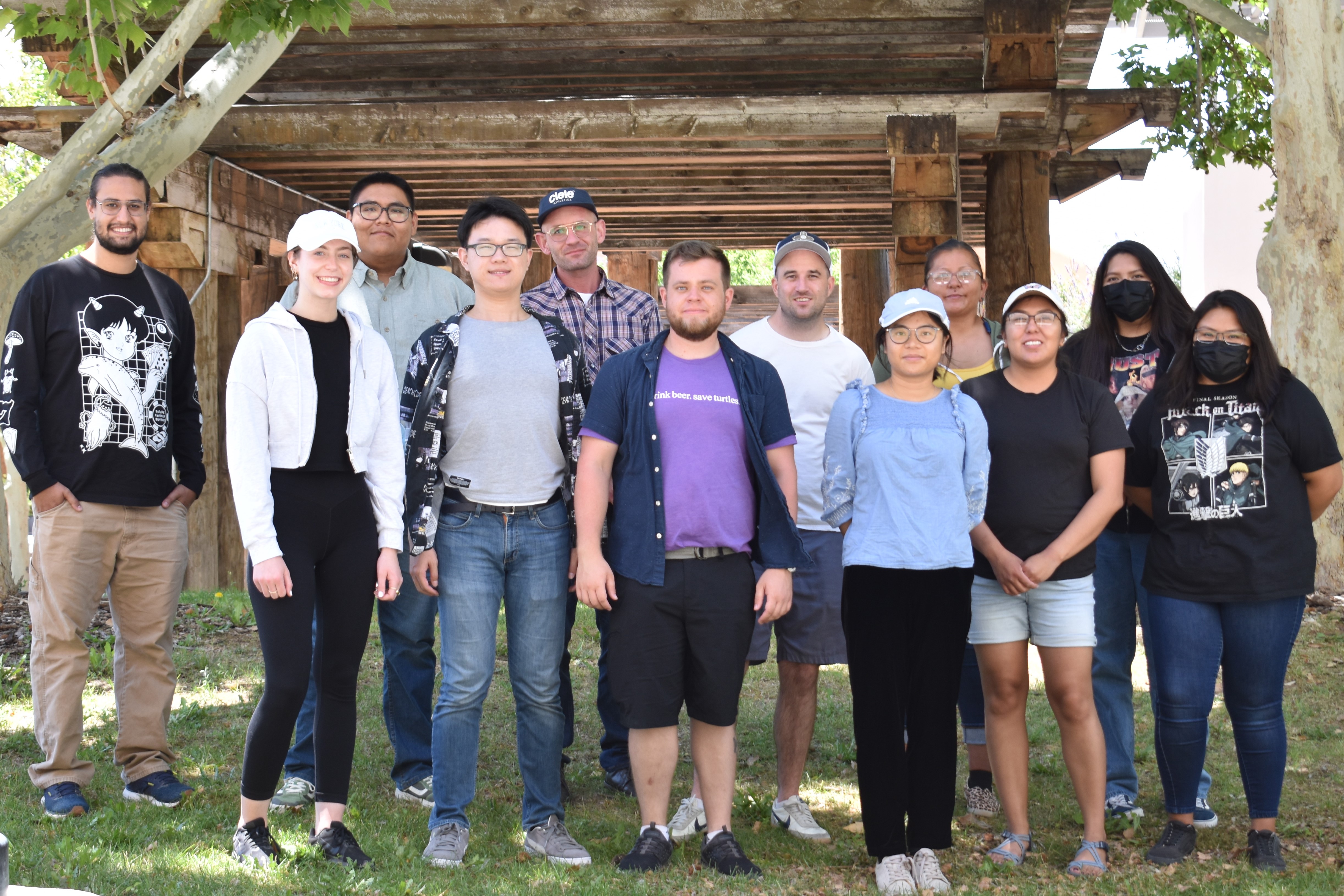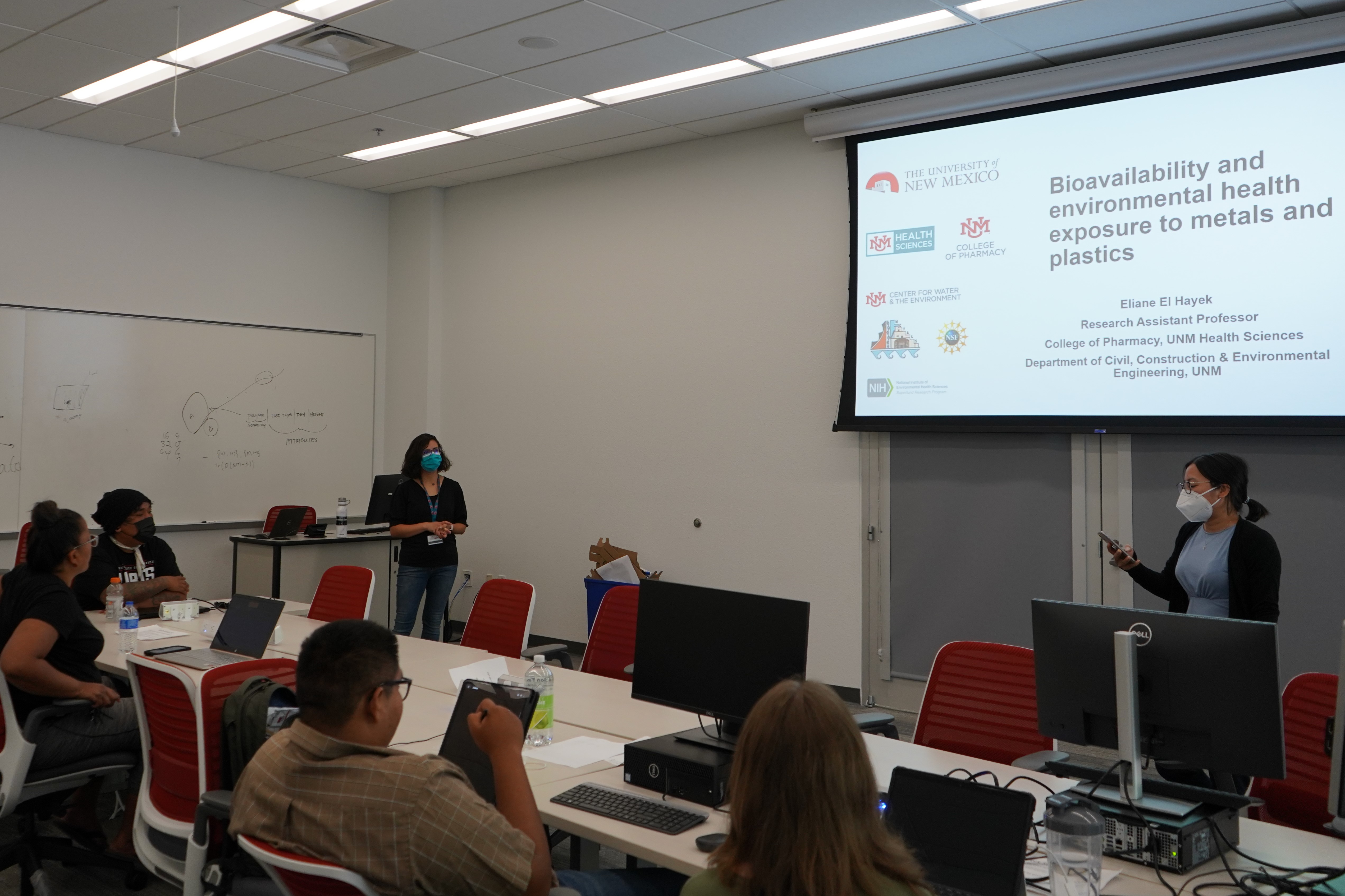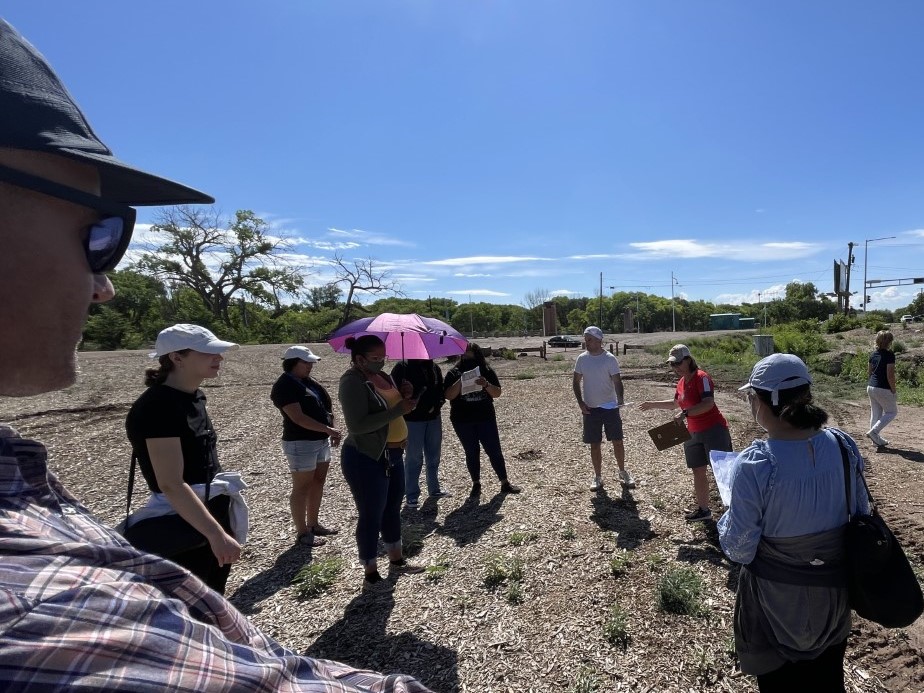Innovative new summer internship program addresses environmental health concerns in communities
Posted: August 8, 2022
A new internship program launched this summer at UNM sponsored by National Science Foundation (NSF) EPSCoR Track 2 program, TickBase project is introducing undergraduate college students to the field of Geographic Information Science (GIS) and how it can be used to address health disparities in underserved communities.
Through an intensive two-week in-person curriculum, the UNM - Diné College Summer Internship Program is not only training future leaders in this dynamic field but providing them with real-world opportunities to address environmental health challenges facing their communities.
This program was in partnership with Diné College, the TickBase Team (three other institutions: University of Idaho, University of Nevada, Reno, and Dartmouth College), UNM METALS Superfund Research Program Center, the Center for Native Environmental Health Equity Research, the Department of Geography and Environmental Studies and with support from the R.H. Mallory Center for Community Geography. Seven students from Diné College, and one from UNM, were able to attend the program at UNM’s campus in late-June.
 The internship was held in collaboration with Diné College’s NSF-funded Tribal College and Universities Program (TCUP). This program provides students with an intensive 10-week STEM experience over the summer that is focused on professional development and improving the quality of life for the Navajo communities surrounding Diné College.
The internship was held in collaboration with Diné College’s NSF-funded Tribal College and Universities Program (TCUP). This program provides students with an intensive 10-week STEM experience over the summer that is focused on professional development and improving the quality of life for the Navajo communities surrounding Diné College.

Yan Lin, associate professor of Geography and Environmental Studies and affiliate faculty in the Center for the Advancement of Spatial Informatics Research and Education (ASPIRE), headed up this program in coordination with Diné College. Lin said, “I think it is important to train our next generation at the intersection of geospatial data science, environment, community, and health to allow them to solve the contemporary and future complicated interdisciplinary challenges. This internship addresses these pressing needs.”
Students represented multiple disciplinary backgrounds, including health occupation, public health, biology, pre-engineering, and math and statistics. Very few of them had a background in GIS which made the experience all the more rewarding, as it introduced them to the depth of the field and how it can be used to make positive impacts on their community.
 Through geospatial mapping, researchers can identify areas with a potential of increased exposure to harmful contaminants in our drinking water, plants, soil, and air. This analysis is done through precise models developed by researchers who must also work with the communities they are serving to ensure that their work is meeting their needs.
Through geospatial mapping, researchers can identify areas with a potential of increased exposure to harmful contaminants in our drinking water, plants, soil, and air. This analysis is done through precise models developed by researchers who must also work with the communities they are serving to ensure that their work is meeting their needs.
As a broad introduction to the importance and application of this work, students were given a variety of learning experiences including lectures, lab tours, and discussion groups. Topics spanned a number of areas within the field, including geospatial analysis and modeling; to natural hazards and risk modeling; to environmental justice. Throughout this immersive experience, students had the opportunity to learn from some of the leading experts in the field, including faculty from UNM, Dartmouth, and the University of Idaho.
All of this culminated in the development of their own research projects which they will continue to build on throughout the remainder the TCUP summer research experience. Lin says, “It is great to see students bring their own questions from their communities and bring back some tools to help address those important questions. They are looking into a variety of local challenges, including environmental justice related to mining, climate change and mine waste redistribution, access to healthcare, mining and health outcomes, land use and brownfields in Navajo Nation. I am glad this internship will help them understand and address some of these issues.”

The training did not end at UNM, as students were able to expand their knowledge – and their network – by attending the National Environmental Health Association’s (NEHA) conference in Spokane, Washington from June 28 – July 1. Here, they were exposed to nationwide experts in various topics including climate and health, data and technology, water quality, and environmental health.
Student interns also had the opportunity to learn about community initiatives in Albuquerque. Dr. Maria Lane, Geography Professor and Director of the Center for Community Geography, organized a field trip to project sites in the South Valley. ‘It was fun to take the geospatial interns to sites along the Rio Grande where they could learn about water management and also about the cool mapping projects Geography students and faculty have been working on with community groups,’ she said.
All in all, this creative summer research internship has provided a valuable professional development experience that will only continue to make positive impacts on health outcomes throughout our communities. Said one student about the program, “It was very informative, I have learned a lot I enjoyed the labs and creating different maps based on the data.” Another student shared their gratitude for being a part of this internship by saying, “I am glad to get a chance to meet everyone on the GIS team and interact with talented people who share the same passion. I am thankful for the experience provide by the GIS team.”
